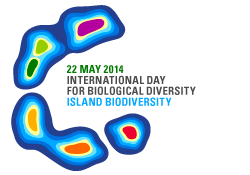Photos by Simone Marques
HERMAPHRODITISM
A TALE OF TWO SEXES
by Leonard Ho
(Reefscapes.net © 2002)
A hermaphrodite is defined as any individual organism that possesses both male and female reproductive organs during their life span. The main advantage of hermaphroditism is the assurance of a reproductive partner. Although hermaphroditism is quite common in invertebrates and plants, it is an exceedingly rare occurrence in vertebrates. Hermaphroditism in mammals and birds are almost always a pathological condition (often leading to infertility). Only in Perciforms (fish) does hermaphroditism occur naturally and in high frequency.
Hermaphrodites are divided into two main categories: synchronous hermaphrodites, and sequential hermaphrodites. In the synchronous hermaphrodites, organisms possess both active male and active female reproductive organs at the same time. In sequential hermaphrodites, both male and female reproductive organs may be present, but only one is active and viable at any given time.
Synchronous, or simultaneous hermaphrodites in reef fish are relatively atypical. A few Serranids (sea basses, e.g. Serranus sp.) and Hamlets are known synchronous hermaphrodites.
Sequential hermaphrodites are so named because they are capable of transforming from one sex to another. Theses transformations entail a full conversion of gonads from one sex to another. The gonads of sequential hermaphrodites possess the genetic information to produce both male and female reproductive organs, but only the dominant gene is expressed at any give time. Different cues – varying from species to species – may induce sex changes.
Sequential hermaphrodites are further categorized into two main categories:protogynous and protandrous. Protandrous hermaphrodites are those that develop into males first, then possibly to females. Protogynous hermaphrodites are the exact opposite, with juveniles first developing female reproductive organs that may possibly change into male reproductive organs in select circumstances. It should be noted that hermaphrodites do not necessarily have to change sexes, but by definition, are capable of this feat.
Protandrous hermaphrodites are the rarer of the two types. Pomacentrids (damselfish) are the most famous of these hermaphrodites. For example, clownfish of the genus Amphiprion live in communities that consist of of one dominant female specimen and several smaller male (or asexual juvenile) specimens. If the female should be removed, a male will convert to a female, insuring a reproductive partner for the community.
Protogynous hermaphrodites are most often haremic fish. These fish form monoandric harems comprising of 1 male overseeing numerous females for life. The two primary responsibilities of the male are to defend its territory against other conspecific males, and to court and fertilize females of its territory. If the male should die (either of natural causes or conflict-related mortality), the dominant female of the harem will undergo a sex change from female to male. This sex change may take as little as 5 days. The new male will then resume the full responsibilities of the previous male until he should die. Protogynous hermaphrodites that form harems include the wrasses of the genus Cirrhilabrus and Paracheinlinus, Dwarf Angelfish of the genus Centropyge, and Anthias (e.g.Pseudoanthias sp.).
Some protogynous fish do not form harems, but may form pairs. The dottybacks (Pseudochromis sp.) are presumably protogynous hermaphrodites that fall under this category.
There are also sequential hermaphrodites that waver between sexes with no discernable order. The sexes of these fish are often determined by the ratio of sexes in an immediate community. These types of hermaphrodites include numerous gobies.


















